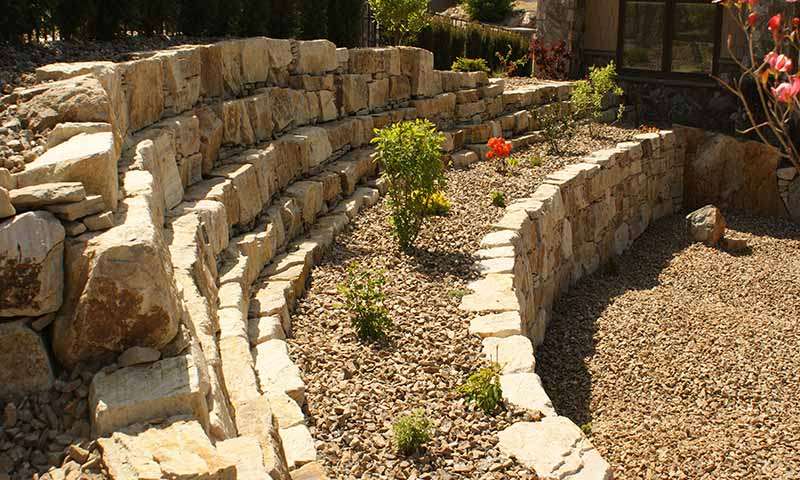
Working with a sloped back yard
When it comes to working a backyard, it can be quite the task, if you live on a slope in or around Nanaimo. Unfortunately living on the island, there are more and more properties being built in the mountains, as we also all want a nice view.
Help, i have a sloped backyard!
Now when we talk about a slope, we aren’t talking a gentle 2% grade, we mean several feet from one end of the property to the other.
As a outdoor trade, we love the flat properties where the ground makes for a simple install, where we can use all the budget on being as creative as possible.
When dealing with a slope, the first thing you have to think about is drainage and grading. With that also comes walls and steps, because if we are going to make this into a nice useable area then we need to create some flat spaces.
Do i need to level my backyard?
If your going to have an area to sit or entertain then you will want areas that are almost level. trying to sit at a chair or table on a slope is not very comfortable. Also if your property has too much of a slope, then you will also have problems watering the plants etc. This is mainly an issue, as the water that you are trying to give to your plants, tends to run down a steep slope faster than it soaks into the ground. So in order to keep your hard work alive, you will waste more water and have a slightly larger water bill than necessarily needed.
What is the cheapest way to level your backyard?
When it comes to a budget, walls are not your friend. That is because there is safety involved. Usually the city bylaw in most provinces states that any wall that is over 3 feet has to engineered and probably involve a permit as well. We advise checking into that as it costly to do properly, but cheaper than not.
The other way if you have the space, is to be build walls under 3ft and have several, giving a tiered effect. However you will still need to address things like drainage for hydrostatic pressure, access into the tiers, and if there are any regulations in your area as to how close you can have tiered walls.
As to the best wall material for a smaller budget, I would say going with pressure treated 4×6 laterals with 4×6 posts concreted in the ground for support. While this maybe the cheapest and quite sturdy, it wont however give you the best longevity due to wood doesn’t like water and organic matter, as it tends to make wood breakdown over time.
If you have a larger budget then I would go with poured concrete with footings, which make for a good solid wall. Unfortunately concrete isn’t the most visually aesthetic material for a wall, and some form of covering can make it pricey ie parging, stone veneer or tile.
Another large budget option we like to use is natural stone, but unfortunately the bigger the wall the larger the boulders. This often involves an excavator and a skilled driver, so be prepared for a large budget if you have a natural stone wall in mind for your project.
Please note with any of these walls, you are going to want to look into redirecting water away from the back of the wall with fabric, weeping tile or perforated pvc and drain rock. Without this, mother nature has the ability over time to move even the best built walls and cause havoc to the best of designs.
How do you level a yard with a slope?
The best way to level a yard , is with retaining walls. Always factor in some form of slope to direct water away from key areas, like buildings and foundations. Also consider underground drainage to take water away from behind walls to prevent hydrostatic pressure build up.
How can slope erosion be prevented?
To prevent erosion on a slope, there are a couple of options;
- Look at changing the slope to reduce it
- Look into native plants that will help stabilize the slope, grasses , creeping vines etc
- Manmade products that prevent or slowdown ground movement such as mats ,pavers or gabian baskets.
Sometimes you can use a combination of all three to get a visually aesthetic result for the area your working with.
Can gravel be laid on a slope?
If you are considering using gravel on a slope, then our advice would be to go with larger piece gravel, such a river rock. With fabric on the base, this will add weight as well as act more of a stacking effect to help retain the slope you have in question. If the river rock causes to much of the fabric to show, then mix in some smaller drain rock to help fill an gaps and tie it all together. We would recommend this option for any slopes greater than 45 degrees, then would recommend looking into wall options and materials
Does mulch stay on a slope?
Mulch has tendency to move around with wind and water, so unless installed a reasonably level area it will travel quite quickly. If the mulch is installed on fabric then movement will happen quicker and become unsightly .
